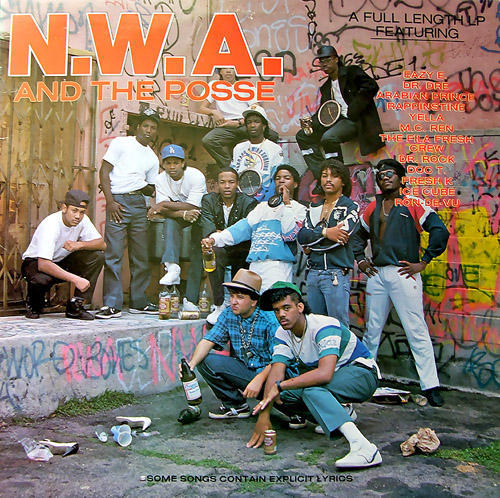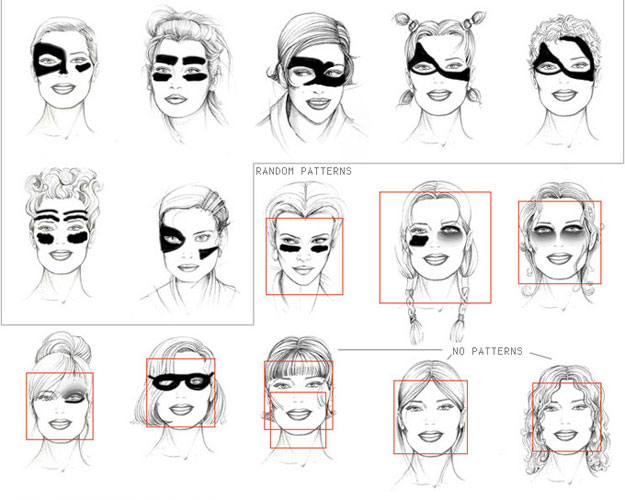Links and write-ups about beautiful things from around the web!
-
N.W.A. Posse Cover

Whatever Happened to N.W.A.’s Posse? LA Weekly tracks down all of the guys featured on the cover of N.W.A.’s lesser known first album, perhaps the first photo of gangsta rap. A handful of them were only there to give rides to their friends. For the others, though, this album launched careers that would redefine the 1990’s music landscape (see if you can spot Dr. Dre, Ice Cube, Eazy-E, MC Ren…). Here’s one incredible bit of trivia:
When N.W.A signed with Priority, the group was only the label’s second signed act. The other was the California Raisins. That’s right: The first noncompilation album released by Priority was The California Raisins Sing the Hit Songs. The second was Straight Outta Compton.
-
Potemkin Army

The Discover blog reports on a Potemkin army:
Russian balloon maker Rusbal is working on an order from the country’s defense ministry to supply full-scale inflatable military models. The realistic-looking hardware is used in battlefield positions and to protect Russian strategic installations from surveillance satellites, distracting snoops and protecting real combat units from strikes. They can look like real vehicles in the radar, thermal, and near infra-red bands, so they’d even look right through night-vision goggles.
And now from Shakespeare’s Macbeth (Act V Scene IV — you know, the cool part where the incoming army disguises itself as the Birnam forest):
MALCOLM
Let every soldier hew him down a bough
And bear’t before him: thereby shall we shadow
The numbers of our host and make discovery
Err in report of us.Nothing much new, then. Simple visual misdirection is the magician’s greatest asset.
See also:
- Edison’s Warriors, a great article in Cabinet about the U.S. 3132nd Signal Service Company in WWII, a sonic deception team that created strategic disruption using wire and tape recordings with acoustical engineering help from Bell Labs
- Operation Bertram
- The Ghost Army
-
Allen Ginsberg: Ballad of the Skeletons
Ballad of the Skeletons. So good. Allen Ginsberg backed by Paul McCartney and Lenny Kaye on guitar and Philip Glass on keyboard, video by Gus Van Sant. This is the considerably shorter radio edit version of the full 7 minute recording that was one of my favorite CD’s when it was released back in 1996.
-
Mon Oncle
Les lignes géométriques ne rendent pas les gens aimables [geometrical lines do not produce likeable people].
Filmmaker Jacques Tati on Villa Arpel, the comically painful modern house depicted in his satire Mon Oncle. You can watch a nice video of the house being reconstructed piece by piece for the recent Tati exposition at the Cinémathèque Française.
(Quote found on Wikipedia)
-
Shockwave
We’ve all been exposed to a glut of volcano videos lately, but this one has something I’ve never seen before. If you watch a few seconds in you can see the first of a series of visible shock waves rippling through the cloud of ash. Yikes.
-
parchment
Parchment is a JavaScript-powered Z-machine interpreter. Translation: you can now play your Zork and your Leather Goddesses of Phobos (or more modern pieces of interactive fiction) without leaving the comfort of your web browser.
(Via O’Reilly Radar)
-
An ecological study of glee in small groups of preschool children
A phenomenon called group glee was studied in videotapes of 596 formal lessons in a preschool. This was characterized by joyful screaming, laughing, and intense physical acts which occurred in simultaneous bursts or which spread in a contagious fashion from one child to another.
Science!
See also:
- Radiolab’s 2008 episode on Laughter
- The 1962 Tanganyika ‘laughter epidemic’
- The Giggle Loop
(Via NCBI ROFL, which I guess is appropriately named in this case)
-
CV Dazzle

Technologist Adam Harvey explores using dazzle camouflage makeup to thwart facial recognition libraries like OpenCV in his thesis project CV Dazzle (red squares in image denote the drawings that were successfully identified by the software as faces). Summary article over at PopSci.
(Via Discover)
-
Solar Flare

False color extreme ultraviolet photo of the sun taken by the NASA Solar Dynamics Observatory. The zoomed-in video (40MB Quicktime .mov) of the solar flare you see on the left is incredible.
-
Daydreaming
And as she lost consciousness of outer things, and her name and her personality and her appearance, and whether Mr. Carmichael was there or not, her mind kept throwing up from its depths, scenes, and names, and sayings, and memories and ideas, like a fountain spurting over that glaring, hideously difficult white space, while she modelled it with greens and blues. On daydreaming as a means to get past the terror of the blank canvas. From Virginia Woolf’s To The Lighthouse.
